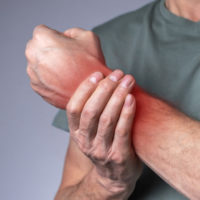
Chronic Joint Pain: Understanding and Managing Your Discomfort
What is Chronic Joint Pain?
Chronic joint pain refers to persistent and long-term discomfort in one or more joints of the body. Joints are the connections between bones, and they allow movement and flexibility. When these joints are affected by inflammation, injury, or degeneration, it can lead to chronic pain that may last for weeks, months, or even years.
Causes of Chronic Joint Pain:
- Osteoarthritis: This is the most prevalent cause of chronic joint pain, especially among older adults. Osteoarthritis occurs when the protective cartilage that cushions the ends of bones wears down over time, resulting in pain, stiffness, and limited mobility.
- Rheumatoid Arthritis: Unlike osteoarthritis, rheumatoid arthritis is an autoimmune disorder where the body’s immune system mistakenly attacks its own joints, causing inflammation and pain.
- Gout: Gout is a form of arthritis caused by the buildup of uric acid crystals in the joints, leading to sudden and severe joint pain, most commonly affecting the big toe.
- Injuries: Past injuries, such as sprains, fractures, or ligament tears, can cause chronic joint pain, especially if not treated properly.
- Overuse or Repetitive Stress: Certain occupations or activities that put repetitive stress on joints can result in chronic pain over time.
- Bursitis and Tendinitis: Inflammation of the bursae (fluid-filled sacs that cushion the joints) or tendons can cause chronic joint pain.
Conservative Treatments:
Dr. Edward Rubin employs a holistic approach to managing chronic joint pain, emphasizing conservative treatments before considering more invasive options. These treatments may include:
- Physical Therapy: Customized exercises and stretches can help improve joint flexibility, strength, and reduce pain.
- Pain Medications: Over-the-counter nonsteroidal anti-inflammatory drugs (NSAIDs) or prescription medications may be recommended to alleviate pain and inflammation.
- Hot and Cold Therapy: Applying heat or ice packs to the affected area can help reduce inflammation and soothe pain.
- Lifestyle Modifications: Dr. Rubin may suggest lifestyle changes, such as weight management and joint protection techniques, to alleviate stress on the affected joints.
- Assistive Devices: The use of assistive devices like canes or braces may be beneficial in supporting the affected joints and reducing pain.
Minimally Invasive Procedures:
In some cases, conservative treatments alone may not provide sufficient relief. Dr. Edward Rubin offers minimally invasive procedures that aim to target the source of chronic joint pain directly:
- Corticosteroid Injections: These injections deliver powerful anti-inflammatory medication directly into the joint, providing relief from pain and inflammation.
- Hyaluronic Acid Injections: For patients with osteoarthritis, hyaluronic acid injections can help lubricate the joint, reduce friction, and improve mobility.
- Platelet-Rich Plasma (PRP) Therapy: PRP therapy involves using the patient’s own blood, which is processed to concentrate healing platelets. This injection is then administered into the joint to promote tissue repair and reduce pain.
- Viscosupplementation: This procedure involves injecting a gel-like substance into the joint to provide extra cushioning and reduce pain.
Take Control of Your Joint Pain – Schedule an Appointment with Dr. Edward Rubin:
If you’re experiencing chronic joint pain that interferes with your daily activities and quality of life, take the first step towards relief by scheduling an appointment with Dr. Edward Rubin. With his expertise in pain management and commitment to using conservative treatments and minimally invasive procedures, Dr. Rubin will work with you to develop a personalized treatment plan to address your specific needs and alleviate your joint pain.
Don’t let chronic joint pain hold you back; contact us today to schedule your appointment and begin your journey to a pain-free life.
